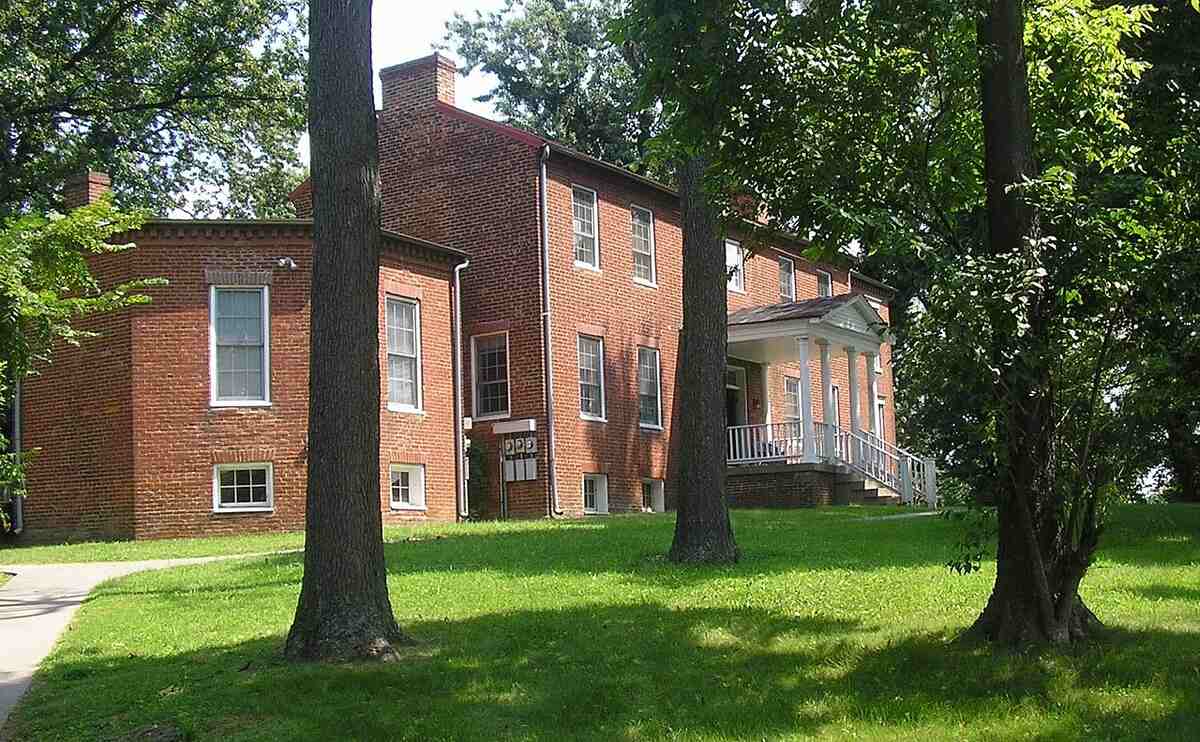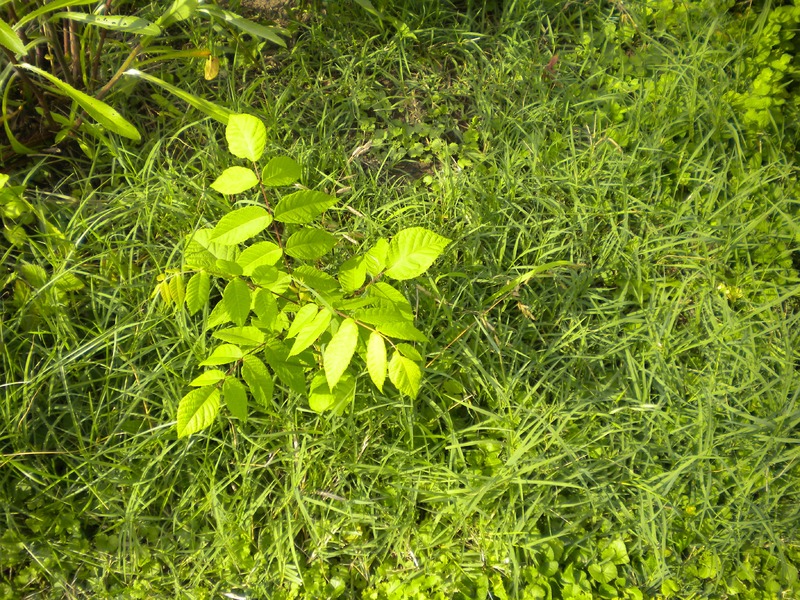
Spring lawn care in Louisville should start several weeks before the annual Run for the Roses and includes testing your soil, fertilization, weed control, and firing up your lawn mower. Consider this your spring lawn care guide to Louisville – what to do and when to ensure a fresh, green lawn.
1. Soil Test

The health and beauty of your lawn depends on the health of the soil. Soil is healthy only if the pH level is optimal. The optimal pH range for a healthy lawn is between five and seven.
To find out your soil’s pH level, collect a sample and conduct a soil test. You can find simple DIY soil test kits at most home and garden stores, or you can submit your sample to your local University of Kentucky Cooperative Extension Office for a more detailed analysis.
Based on the results of the soil test, you can decide what kind of fertilizer and other soil amendments might be needed to improve your soil.
2. Consider Aeration

Aeration can loosen the soil and encourage healthy lawn development if the grass is having trouble absorbing water and essential nutrients because of soil compaction. You can rent a core aerator machine to aerate your own lawn or hire a lawn care pro for this service.
If you decide to go the DIY route, use the aerator in a single direction until you’ve covered the entire lawn, and then reverse directions and do the same thing again.
Note: You should only aerate your lawn in spring if you have a warm-season grass such as Bermuda or Zoysia. Cool-season grasses, such as Kentucky bluegrass, are best aerated in fall.
3. Dethatching

Having a good layer of thatch prevents the soil from drying out during periods of extreme heat or cold. However, if the thatch layer in your lawn is thicker than ¾-inch, it will act as a barrier to the flow of water, fertilizer, sunlight, and nutrients to the grass’s root system. It then becomes necessary to dethatch your lawn.
Before dethatching, evaluate the level of thatch in your grass. A layer of organic matter that is actually healthy and beneficial to the lawn should never be removed. You can determine the amount of thatch in your lawn by digging up a small wedge of grass and soil.
If you decide your lawn needs dethatching, late spring or early summer is the best time for warm-season grasses, while early spring or early fall is the best time for cool-season grasses.
4. Weed Control

Weeds are generally signs of strained turf or poor soil. Weeds can be greatly reduced with the help of well-maintained soil and grass. You can also pull the obvious weeds out by hand.
You can take preventative measures against summer weeds, such as crabgrass, by applying pre-emergent herbicides to your lawn in early spring. Pre-emergent herbicides keep weeds from sprouting in the first place.
Have spring weeds already taken over the lawn? You can hand-pull them (the most environmentally friendly method) or use post-emergent herbicides to kill them.
5. Lawn Fertilization

You should kick off the new year with fertilizers in spring, after the last frost of the year. For Louisville, the last frost usually hits in early to mid-April. Just after this is the best time to apply fertilizers rich in iron and micronutrients to grow a nourished lawn.
For warm-season grasses, fertilize the lawn from early spring to late summer during the active growth phase of the grass. When the grass is dormant in the fall and winter, fertilizing it will only encourage the growth of weeds, so avoid fertilizing at that time.
Cool-season grasses, on the other hand, benefit most from fertilization as part of fall lawn care, after plants emerge from their summer dormancy but before the winter season. If you’re planning two fertilizer applications during the year, though, the second one should be as early as possible in spring but still after the last frost.
6. Mowing

Instead of waiting until your lawn is overgrown, you should mow it once or twice every week in spring. When the grass is cut more often, it is encouraged to regrow by feeding on its stored nutrients in the soil.
But don’t start mowing too early when your grass is still dormant. Wait until it greens up and starts growing again after winter dormancy before your first mow of the season. Mowing too early can stress the fragile dormant grass.
Additionally, sharpen your mower blades before spring. A dull blade can shred the grass instead of cutting it, causing damage to your yard.
The ideal height and frequency for mowing the grass in Louisville in spring depends on your grass type. See the recommended mowing heights for the most common grass types in Kentucky below.
| Grass Species | Spring Mowing Height (inches) | Mowing Frequency (times per week) |
| Zoysiagrass | 1-2 | 1-2 |
| Kentucky Bluegrass | 2.5-3.5 | 1 |
| Tall Fescue | 2-3 | 1-2 |
| Perennial Ryegrass | 1.5-2.5 | 1 |
| Bermudagrass | 0.5-2.5 | 1-2 |
Pro Tip: Never mow your lawn more than ⅓ of the grass’s total height. Cutting off too much height at once can make it difficult for the grass to recover.
7. Make the Natural Lawn Care Transition
Normally, we start lawn care in early spring following the dormancy of winter. So, it’s the best time to switch to natural or organic lawn care. Now the question arises, what is natural lawn care? It basically means you are going to look after your lawn without using any synthetic chemical fertilizers, herbicides, or pesticides. It might include:
- Natural fertilizers such as compost, manure, or commercial organic fertilizer products. The consistent application of organic fertilizers during the growing season ensures that the grass always has access to the required nutrients, aids in the development of the plant’s foliage and roots, and prevents runoff of chemicals into groundwater, lakes, and rivers.
- Natural weed killers, such as corn gluten meal and vinegar. Corn gluten meal is a pre-emergent organic weed control option, while vinegar and other household items can be used as post-emergent weed killers.
- Natural pesticides, such as neem oil, diatomaceous earth, and spinosad. These non-toxic or low-toxicity organic pesticides are safer, cleaner substitutes for chemical pesticides that can prevent and eliminate lawn pests.
Alter your lawn care routine this spring by using these natural products. This will make you a responsible, eco-friendly homeowner without sacrificing the look of your lawn.
8. Get Rid of Pests

With the arrival of spring, lawn pests start to arrive, too. Some common symptoms of pests to look out for include:
- Irregular brown patches
- Chewed grass blades
- Grass blades that lift easily out of the soil
- Sheared-off grass blades
If you find any of these symptoms in your lawn, this is the time to look into some pest control strategies. But first, get familiar with the common pests in Louisville that can trouble you in spring. They include:
- Grubs: These are six-legged, C-shaped beetle larvae found in the soil. Grubs usually attack poorly maintained lawns. Learn how to get rid of grubs in our guide.
- Chinch Bugs: They are plant-eating insects that are present at the base of your grass. They are normally inactive in winter, but as spring arrives, they become active. So, be careful because they reproduce from early spring till fall. Learn more about chinch bug control in our guide.
- Sod Webworms: These are turf-damaging larvae that look like worms. They are about one inch long and are brown in color. Thatch buildup is the common cause of their infestation. As they prefer dry, warm turf, you can prevent them by watering your lawn regularly.
- Mole Crickets: They are cylindrical-bodied insects that tunnel around your turf beneath the soil. If mole crickets are present in your lawn, they’ll uproot your plants and grasses, resulting in a dull, dry spring lawn. Learn how to control mole crickets in our guide.
To keep your spring lawn pest free, the best thing you can do is maintain a healthy lawn that doesn’t offer easy food and shelter for pests. Follow these tips to prevent pests:
- Don’t over or under-water your lawn
- Don’t let your turf overgrow
- Avoid thatch buildup
- Clean up debris and fallen leaves
- Don’t overlook minor changes in your lawn, such as browning or yellowing patches
If you find it difficult to control the pest infestation in your lawn on your own, consider hiring a Louisville lawn care pro that’s licensed to use lawn pesticides. This should be a last resort, as pesticides are bad for the environment.
9. Overseeding the Lawn

Overseeding means spreading new grass seed on your existing lawn to fill in thin or bare patches and make the grass denser and stronger overall. When to overseed the lawn in Louisville depends on what type of grass you have.
Cool-season grasses like tall fescue and Kentucky bluegrass should ideally be overseeded between mid-August and September. But you can also overseed them in March or April when the soil temperature rises consistently above 50° F.
Warm-season grasses like Bermuda and Zoysia should also be overseeded around March or April after the last frost has passed and the grass has greened up from winter dormancy.
FAQ
Cool-season lawns are best fertilized in fall, but they can also be fertilized in early spring, around March or April, after the last frost in Louisville. Fertilization for warm-season lawns should begin in late spring when the soil temperature is between 65 and 75° F.
The most effective fertilizer to use in spring is one that gradually releases the nitrogen it contains. This type of fertilizer will ensure that your lawn receives nutrients over a longer time frame instead of all at once, which can lead to burning.
You can, but not too much. Raking can prevent the accumulation of unhealthy thatch and dead grass, but it can also remove live, healthy grass that is still fragile after winter.
Final Thoughts
Winter leaves lawns dry and dormant. How can you revive your Louisville lawn? Follow our spring lawn care tips to get your dream lush lawn this spring. Start your spring lawn care regimen right away. If you need further help, contact our Louisville lawn care services today to get the perfect lawn.
Main Image Credit: W. marsh / Wikimedia Commons / CC BY 2.0





